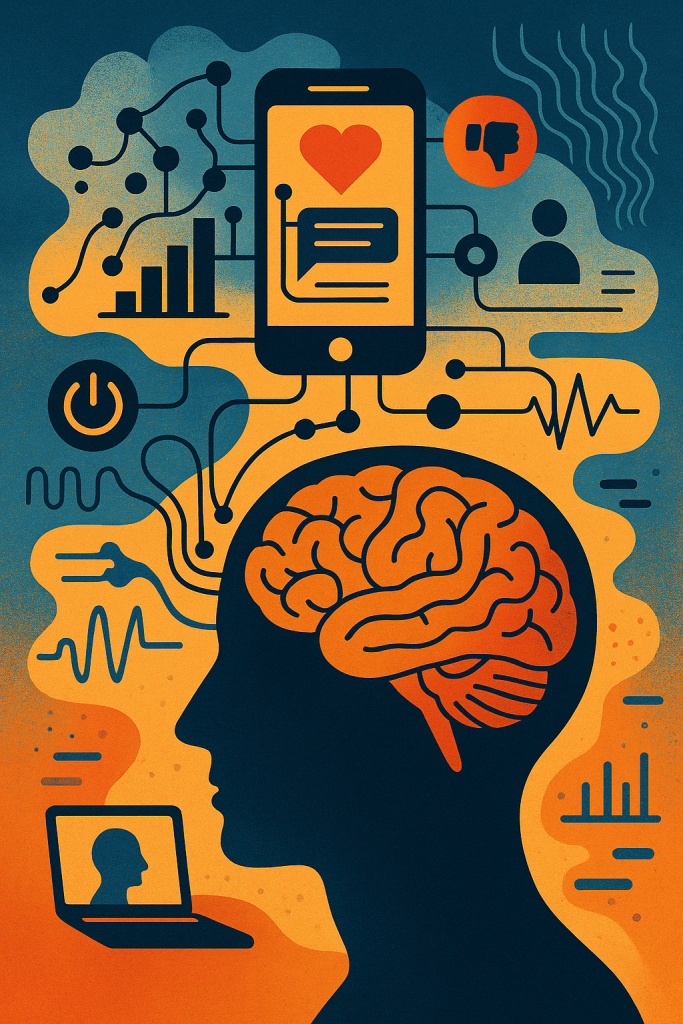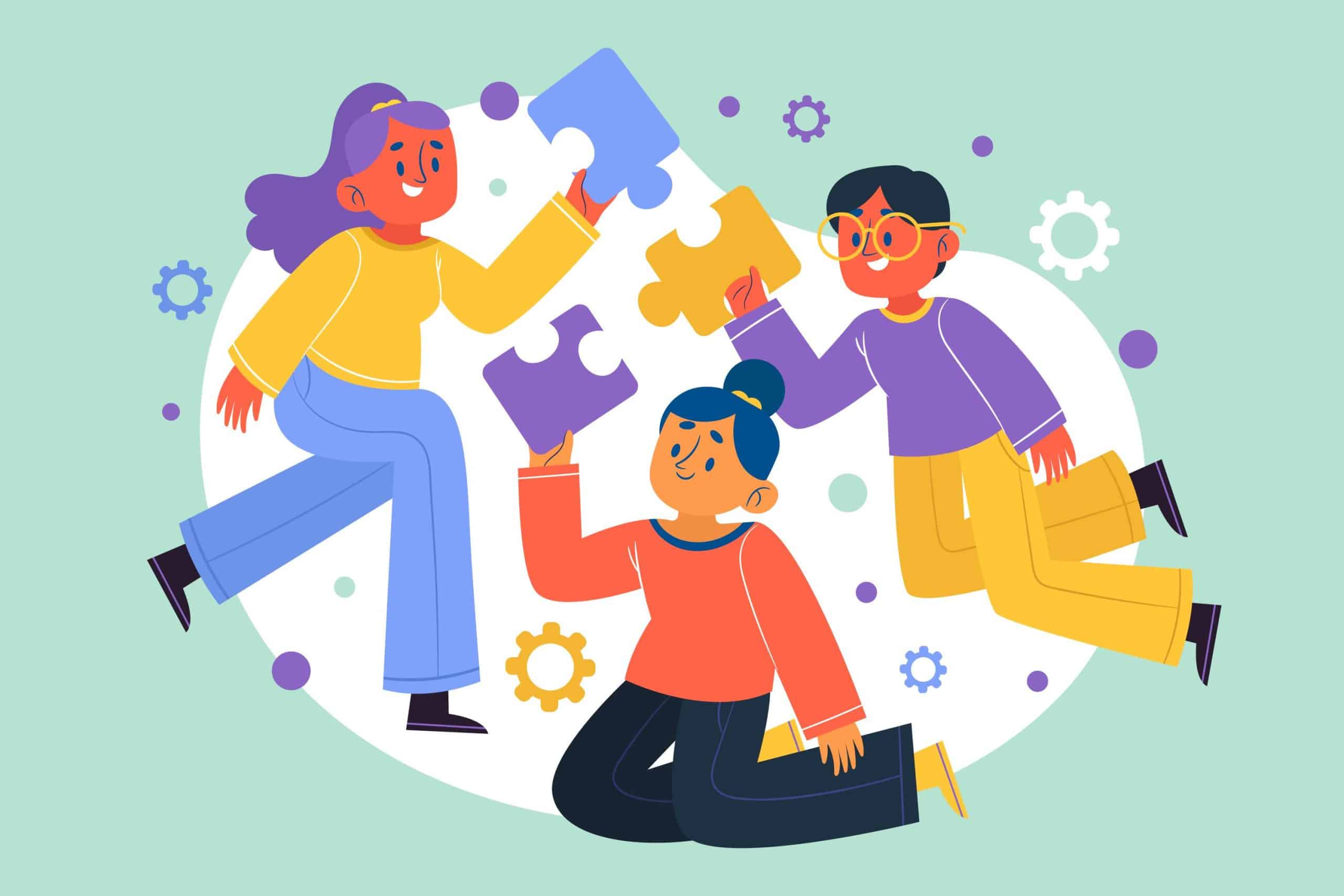Understanding what neuroscience reveals about digital behavior sheds light on how screens and apps rewire our brain systems—from dopamine-driven addiction loops to attention erosion. With research evolving in 2025, this article explores cognitive risks, protective strategies, and neuroscience-backed tools to help you thrive—not just survive—in our digital world. The keyphrase appears naturally here.

Dopamine, Compulsion Loops & Reward Hijacking
Neuroscience explains that digital platforms are built around reward systems engineered to hijack our dopamine circuitry:
- Compulsion loops—feature notifications, likes, or streaks—create unpredictable reward schedules that release dopamine in the ventral tegmental area (VTA) and nucleus accumbens, akin to early-stage addiction.
- A 2025 study describes modern users as “dopamine addicts,” hooked on constant screen-driven stimuli.
- Harvard experts highlight that screen-mediated dopamine spikes can surpass typical rewards and eventually desensitize reward pathways.
These mechanisms echo substance addiction, rewiring dopaminergic pathways and reinforcing repetitive usage patterns.
Tip: Remove addictive apps from your home screen or switch to grayscale to lower impulse triggers.
“Digital Dementia” & Cognitive Overload
The term digital dementia describes the decay in memory, planning, and focus due to excessive passive screen time:
- Cognitive studies document reduced impulse control in heavy screen users, tied to weaker fronto-striatal connections in children and adults.
- Adults consuming >2 hours of non-work screen time exhibit increased stress, memory issues, and social detachment.
- Harvard notes that screen light disrupts sleep and suppresses melatonin, impairing memory consolidation and emotional balance .
Tip: Establish tech-free zones and install blue light filters—especially in the evening.
Digital Detox & Its Effects
What neuroscience reveals about digital behavior makes digital detox a proven intervention:
- A recent review highlighted that detoxing lowers phone dependency and enhances mental clarity, with effects lasting two weeks post-break.
- Targeted detox for educators and students improved focus and reduced stress in educational settings researchgate.net.
- Controlled trials showed that limiting screen time to ≤ 2 hours daily for three weeks decreased depressive symptoms, stress, and improved sleep in young adults.
- Meta-analyses report that structured detox reduces anxiety, depressive mood, and tech-induced stress .
Tip: Start small—enforce nightly phone-free hours, then increase detox intervals over time.
Short-Video Platforms & Risky Decision-Making
Short-video apps (e.g. TikTok, Reels) have been linked to impulsivity and poor decision-making:
- Brain imaging shows that users with short-video addiction have heightened orbitofrontal cortex reactivity during risky tasks.
- The constant novelty of these platforms reinforces compulsive seeking, resembling reward-seeking neurocircuitry .
Tip: Batch short-video use into scheduled times and avoid autoplay features.
Active vs Passive Screen Time: Where Engagement Matters
Not all screen usage is negative. Neuroscience suggests active digital engagement can be beneficial:
- A meta-analysis of 400k adults reported that actively using smartphone tools for learning, puzzles, or communication lowers the risk of cognitive decline by ~58%.
- Combating dopamine overload, experts recommend effortful activities—deep reading, challenging puzzles, exercise—to stimulate dopamine naturally thetimes.co.uk.
Tip: Replace passive browsing with an educational podcast or puzzle app to train your brain.
Neuroplasticity Under Threat
Extended screen time can impair neural plasticity:
- Structural MRI studies show habitual media users have reduced grey matter volume, especially in prefrontal and striatal regions .
- Exposure to dopamine-triggering media can suppress plastic changes in executive regions, weakening impulse control and attention .
Tip: Build brain resilience via mindfulness, exercise, and social interaction to counter these structural impacts.
Social & Emotional Impacts
Digital behavior also affects emotional development and social skills:
- Phubbing—ignoring people to use phones—correlates with higher anxiety and lower relationship satisfaction, especially among teens.
- Digital communication lacks non-verbal cues essential for social cognition, reducing empathy and emotional intelligence .
Tip: Practice phone-free meals, calls, or mornings to improve connection quality.
Neuroscience-Based Control Tools
Neuroscience suggests effective ways to regain control over digital behavior:
- Dopamine Fasting
- Brief abstinence from stimulating digital content helps recalibrate reward sensitivity.
- App Management Tools
- Features like “time limit,” grayscale, and notification silencing add cognitive friction that reduces compulsive use.
- Mindfulness Training
- Practices like meditation strengthen prefrontal networks, improving self-control and attention span .
- Rewarding Alternatives
- Activities like walking, volunteering, or cleaning unload dopamine naturally and improve mental health.
The Road Ahead: Ethical Design in Tech
New paradigms in digital product development, shaped by neuroscience findings, are emerging:
- Research recommends redesigning reinforcement systems to favor meaningful engagement over compulsive usage verywellmind.com.
- Campaigns and regulation are pushing to remove “dark patterns” from apps and require breaks in feedback loops .
This leads to a vision of tech that empowers users instead of exploiting them biologically.
Quick Neuro-Action Summary
| Challenge | Neuroscience Finding | Action |
|---|---|---|
| Reward Hijack & Dopamine addiction | Compulsion loops rewire VTA/striatum—like mild addiction | Hide apps, grayscale phone, set time limits |
| Cognitive decline (“Digital dementia”) | Grey matter loss, attention deficits linked to overuse | Tech-free hours, mindful breaks |
| Short-video impulsivity | OFC/DLPFC risk reactivity increases with short-video exposure | Limit duration, disable autoplay |
| Passive scrolling → stress/fatigue | Doomscrolling harms sleep, raises cortisol | Use blue light filters, bedtime cutoff |
| Phubbing harms relationships | Phone distraction = social anxiety & lower empathy | Declare phone-free zones |
| Digital burnout & anxiety | Detox improves mood, sleep, and overall wellbeing | Weekend detoxes, mindful routines |
Final Thoughts
Understanding what neuroscience reveals about digital behavior empowers us to shape a healthier relationship with technology. While screens are engineered for engagement—even addiction—neuroscience also provides practical tools to reclaim control:
- Recognize reward traps and rebuild neural pathways.
- Choose active, enriching screen use.
- Build routines that protect memory, attention, and relationships.
- Advocate for ethical digital design aligned with brain health.
By embracing these insights, you can master a digital lifestyle that supports well-being—without losing your mind to the dopamine loop.
References
1. Montag, C., & Reuter, M. (2020). The impact of the digital revolution on human brain and behavior. Dialogues in Clinical Neuroscience.
https://www.ncbi.nlm.nih.gov/pmc/articles/PMC7366944/
2. Zhao, Y., et al. (2024). Long‑term impact of digital media on brain development in children. Scientific Reports.
https://www.nature.com/articles/s41598-024-63566-y
3. Chang, M. et al. (2024). Study Reveals Internet Addiction in Teens Affects 4 Key Brain Networks. PLOS Mental Health (reviewed by UCL & Psychiatrist.com).
https://www.psychiatrist.com/news/study-reveals-internet-addiction-in-teens-affects-4-key-brain-networks/






